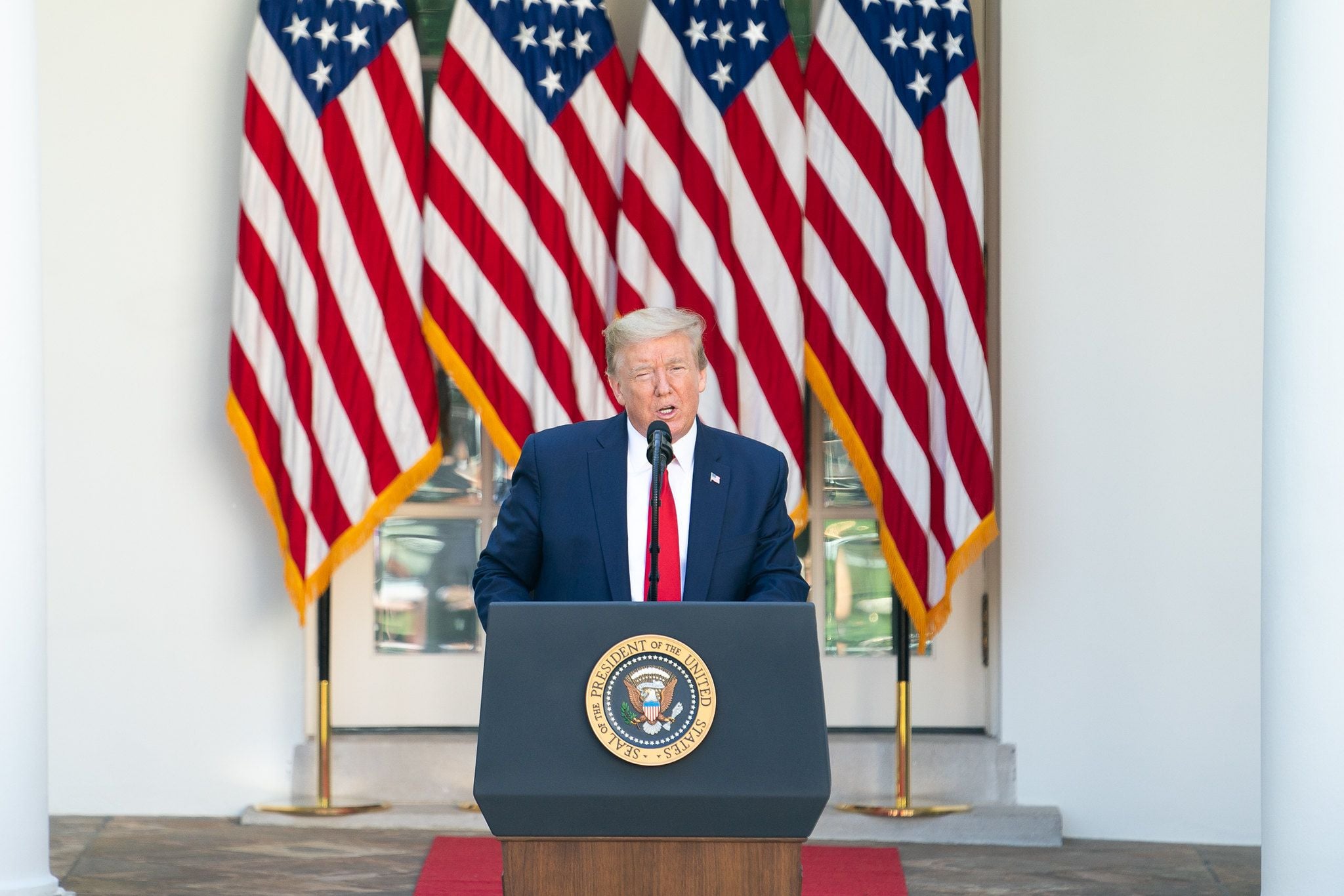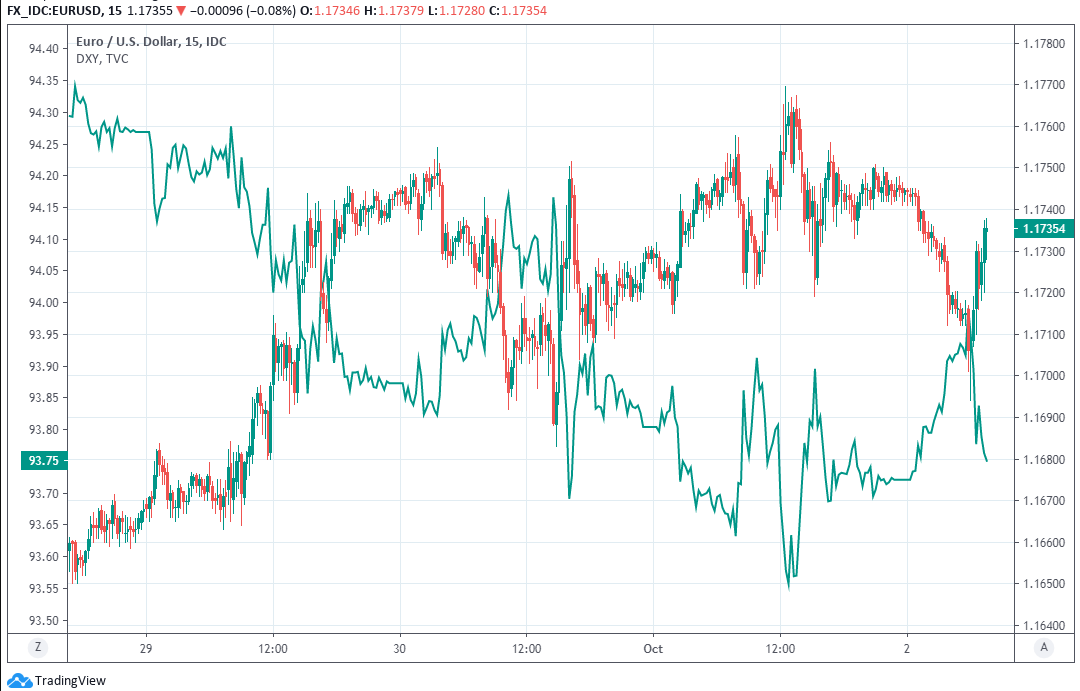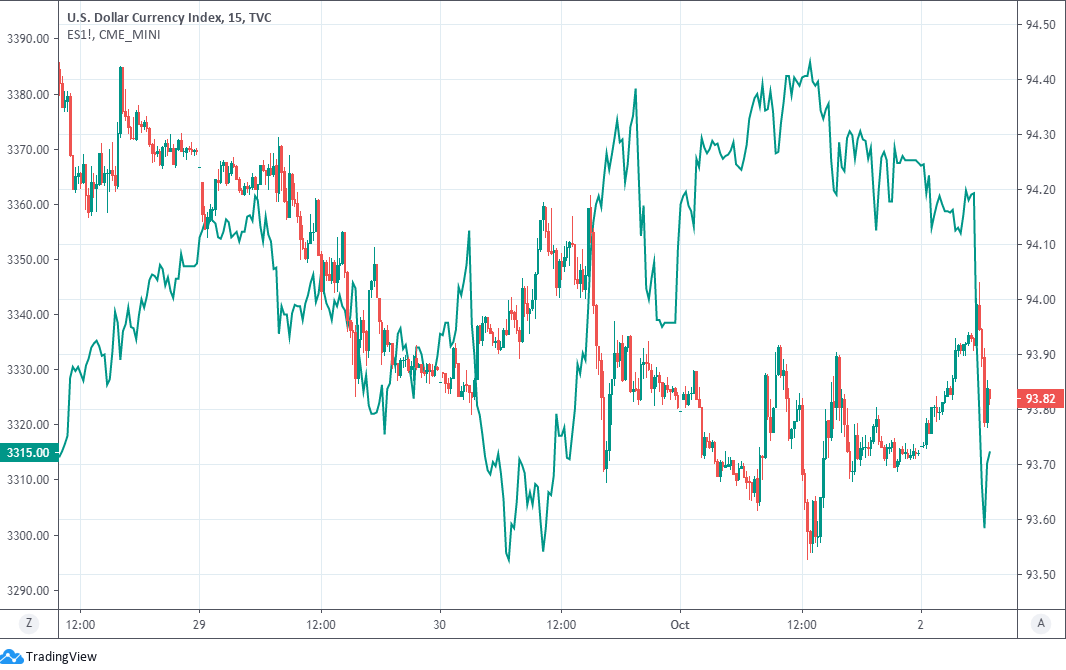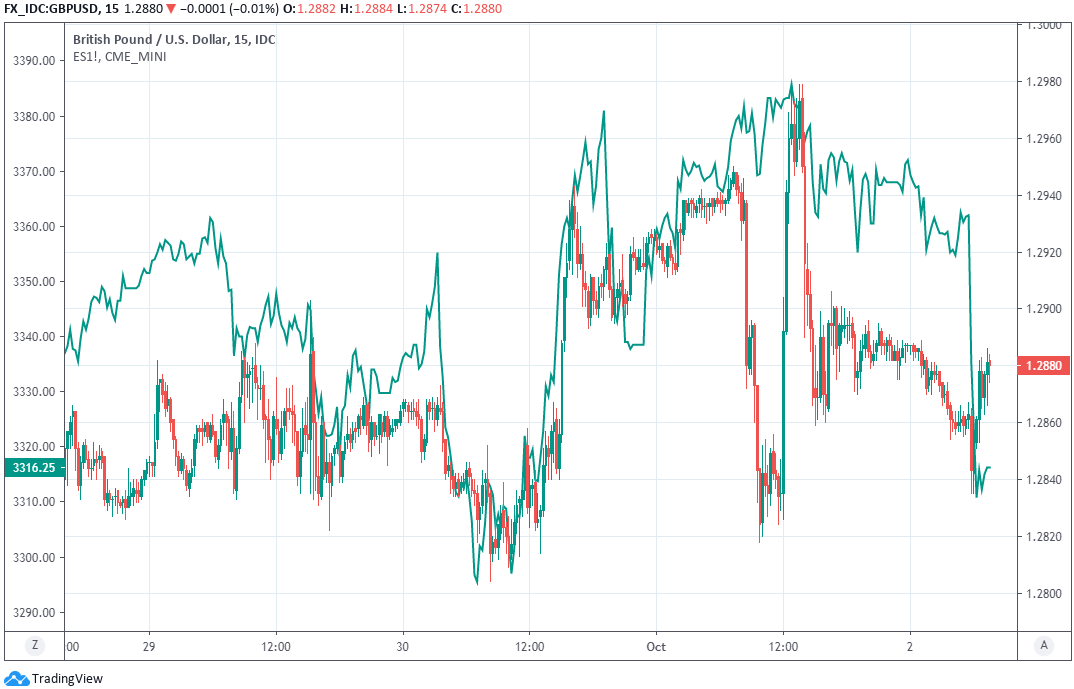U.S. Dollar Rises on News Trump has Contracted Covid-19
- Written by: James Skinner
-USD advances against peers, exceptions being GBP and JPY
-Trump catches covid-19 with unkown implications for election.

Stock image of President Donald Trump. Official White House Photo by D. Myles Cullen
- GBP/USD spot rate at time of writing: 1.2920
- Bank transfer rate (indicative guide): 1.2568-1.2658
- FX specialist providers (indicative guide): 1.2722-1.2804
- More information on FX specialist rates here
The Dollar rose against most its peers and global stock markets fell after President Donald Trump said he and his wife have tested positive for the coronavirus, opening a potential 'Pandora’s box' of uncertainty for investors barely more than a month out from the November 03 election.
President Trump and his wife are isolating inside the White House after testing positive for the disease, following close contact with an aide who was confirmed on Thursday to have also been carrying the virus.
Investors reacted by selling stocks, commodities and emerging market assets while traditional safe haven assets such as the Dollar, Yen and Franc found a bid. Meanwhile, Sterling outperformed all major currencies on developments concerning Brexit, confirming the UK currency's current idiosynchratic tendencies.
"It remains to be seen whether the recent news flow regarding the health situation of President Donald Trump could fuel FX volatility and boost the USD and the JPY on a sustained basis. Indeed, the latest developments may reduce visibility ahead of the US election and force investors to remain in a holding pattern," says Valentin Marinov, Head of G10 FX Strategy at Crédit Agricole.
Tonight, @FLOTUS and I tested positive for COVID-19. We will begin our quarantine and recovery process immediately. We will get through this TOGETHER!
— Donald J. Trump (@realDonaldTrump) October 2, 2020
“To say this could potentially be a *big* deal is an understatement,” says Michael Every, a strategist at Rabobank. “One cannot help but note that Trump is very much in the age and weight category that place him in the higher risk groups, health-wise, and the market and public talk will now be of little else.”
"There will be some wild conspiracy theories banded around, and a lot of conjecture over how this impacts on the election. Ultimately, it means uncertainty and volatility. Accordingly, markets are initially reacting with flows into safe havens, but this will be a volatile session. Does the dollar benefit from this or not?" asks Richard Perry, analyst at Hantec Markets.
As too many Americans have done this year, @potus & I are quarantining at home after testing positive for COVID-19. We are feeling good & I have postponed all upcoming engagements. Please be sure you are staying safe & we will all get through this together.
— Melania Trump (@FLOTUS) October 2, 2020
Both are believed to be in good health and with a medical team on standby although the disease has struck barely more than a month out from the November 03 election, which was already establishing itself as an increasing source of uncertainty and burden upon risk appetite.
A memorandum from the 74-year old's physician, Dr. Sean Conley, suggested he'll continue with his duties from isolation at the White House.
NEW memorandum from White House physician Dr. Sean Conley: pic.twitter.com/cKdARHd9wh
— Weijia Jiang (@weijia) October 2, 2020
"What this means for the election campaign is unclear," says Bernd Weidensteiner, an economist at Commerzbank.
Above: Euro-to-Dollar rate shown at 15-minute intervals alongside Dollar Index (green line, left axis).
"It should be another challenging day for cyclical currencies," says Chris Turner, global head of markets and regional head of research at ING. "DXY to grind higher towards the 94.00 level."
Dollars were sold against the Euro Friday, leading the Dollar Index to pare back an earlier gain, although the greenback remained higher against all other major currencies including Pound Sterling.
S&P 500 futures were quoted more than -1.5% lower while the 10-year bond bond yield was down -2 basis points at 0.659%.
“It seems that the kneejerk reaction was first to sell USD a little instead, at least until markets can work out exactly how this potentially plays out. Stock futures are certainly going down at time of writing, however. Risk is off there,” Rabobank's Every says. “Apart from infections, the focus today is going to be very much on employment: both job retentions and job creations.”
The Dollar had strengthened previously owing to weakness in the Pound, Euro and other currencies although it was paring gains early in the Friday session that will undoubtedly be dominated by contemplation of the President’s health and what might become of the November U.S. election.
"We would also argue that another source of angst in the markets this morning is the possible threat to the election itself," says Derek Halpenny, head of research, global markets EMEA and international securities at MUFG. "Trump debated with Biden for 90mins, admittedly at a distance but if Biden was to become infected, Trump and others could well push for a delay to the election. Both camps would have been together for a period of time that certainly raises the risk of Biden himself or his team becoming infected. A delay to the election is still a small risk of course but an added risk that didn’t exist prior."
The House of Representatives passed a larger stimulus bill than the White House has been willing to sign up for and so optimism among analysts about its prospects of clearing the Senate is low.
Above: Dollar Index shown at 15-minute intervals alongside S&P 500 index futures (green line, left axis).
"A bipartisan compromise on the bill will unlikely be reached in the near term. The USD can rise further if the US economy fails to receive more fiscal support in the short term. Without an injection of income, US households will reduce their saving further to fund consumer spending," says Carol Kong, a strategist at Commonwealth Bank of Australia. "This is the final labour force report before the US Presidential election on 3 November. We expect the unemployment rate to fall to 8%. To date, the labour market has recovered faster than expected."
Friday’s session will also bring the September non-farm payrolls report as well as Eurozone inflation data that may also get a look-in.
Consensus is looking for Eurozone data to show inflation rising from -0.02% to -0.01% in September, when its released at 10:00am, while the U.S. economy is expected to have added 900k jobs last month. This is expected to have pushed the unemployment rate down to 8.2%, from 8.4% previously.
Above: Pound-to-Dollar rate shown at 15-minute intervals alongside S&P 500 index futures (green line, left axis).
“While the market remains below the short term downtrend at 1.1780 a negative bias will remain entrenched,” says Karen Jones, head of technical analysis for currencies, commodities and bonds at Commerzbank, who’s a seller of the Euro but buyer of the Pound. “GBP/USD intraday Elliott wave counts still remain positive and we would allow for a test of 1.3008 the mid-September high.”
In London the focus will be on the week’s Brexit talks that conclude with a meeting of the chief negotiators and amid heightened noise as final quarter deadlines for terms of future trade to be agreed draw closer.
"GBP has weakened on suggestions the latest round in negotiations has hit a snag. We had anticipated a souring of the week’s earlier tone and think GBP should continue to lag its peers near-term. Further out, however, we think sterling has a lot of bad news in the price and wonder if downside risks for cable of a No Deal outcome are starting to diminish," says Ned Rumpeltin, European head of FX strategy at TD Securities. "Looking at 2021-Q4 as an anchor, we are fairly bullish on sterling on a longer-term basis with a forecast of 1.38. In a harder Brexit scenario, we think sterling would still recover, but more slowly. We would want to see how the dust settled, but we would not be too surprised if sterling managed to end next year around 1.30-1.32....our models currently pin GBPUSD’s long term fair value at 1.51."







